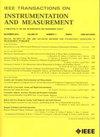Long-Term Finger Force Predictions Using Motoneuron Discharge Activities
IF 5.6
2区 工程技术
Q1 ENGINEERING, ELECTRICAL & ELECTRONIC
IEEE Transactions on Instrumentation and Measurement
Pub Date : 2025-02-10
DOI:10.1109/TIM.2025.3540139
引用次数: 0
Abstract
Surface electromyogram (EMG) signals have been a preferred modality for motor intent detections in the fields of robotic control, rehabilitation, and health monitoring. However, current EMG-based measurement techniques suffer a degradation in performance cross session over time due to factors such as shifts in electrode placement, changes in muscle states, and environmental noise. To address this challenge, we developed a novel neural-drive approach, capable of robust cross-day predictions of individual finger forces. Specifically, high-density EMG (HD-EMG) data were collected from flexor and extensor muscles during single-finger and multifinger tasks. The experimental procedure was repeated three times (sessions), with an average interval of 6.58 days between sessions. We first decomposed the EMG signals in a session to obtain separation matrices that contained motor unit (MU) information in the EMG signals. We then refined the separation matrices that accurately reflected individual fingers. The corresponding separation matrices were applied to EMG signals in the other two sessions to derive the neural drive for force predictions of individual fingers. Our results revealed that the cross-session performance was comparable with the within-session performance. In addition, the neural-drive approach can outperform the conventional EMG-amplitude approach, especially in the cross-session performance. Our developed approach can enhance the long-term reliability of finger force predictions and holds potential for various practical applications.求助全文
约1分钟内获得全文
求助全文
来源期刊

IEEE Transactions on Instrumentation and Measurement
工程技术-工程:电子与电气
CiteScore
9.00
自引率
23.20%
发文量
1294
审稿时长
3.9 months
期刊介绍:
Papers are sought that address innovative solutions to the development and use of electrical and electronic instruments and equipment to measure, monitor and/or record physical phenomena for the purpose of advancing measurement science, methods, functionality and applications. The scope of these papers may encompass: (1) theory, methodology, and practice of measurement; (2) design, development and evaluation of instrumentation and measurement systems and components used in generating, acquiring, conditioning and processing signals; (3) analysis, representation, display, and preservation of the information obtained from a set of measurements; and (4) scientific and technical support to establishment and maintenance of technical standards in the field of Instrumentation and Measurement.
 求助内容:
求助内容: 应助结果提醒方式:
应助结果提醒方式:


